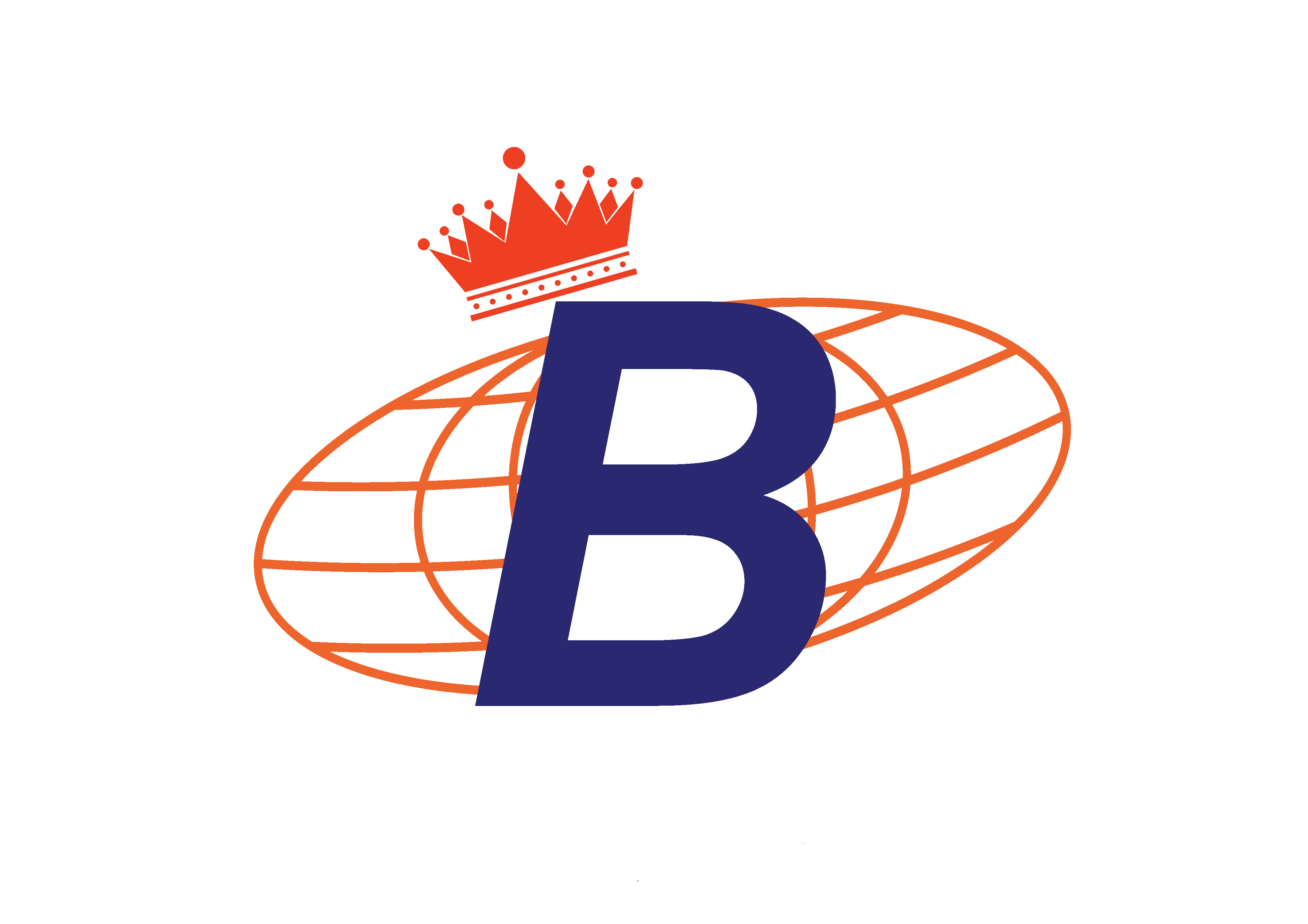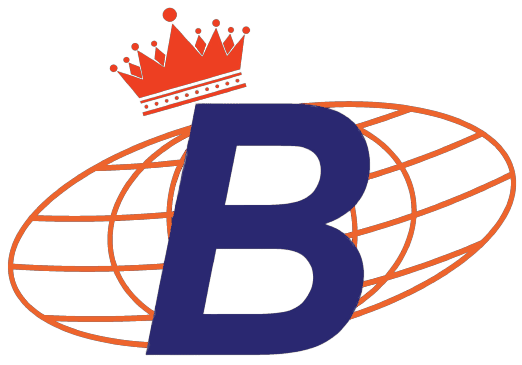The Story of the Last Slave, A Struggling Life Story of African American Slave
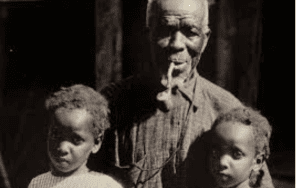
The Story of the Last Slave
Barracoon: The Story of the Last Slave Zora Neale Hurston’s nonfiction book. It’s based on her conversations with Oluale Kossola (aka Cudjoe Lewis), often regarded as the last surviving member of the Middle Passage, in 1927
. Although two female survivors were later located, Cudjoe remained the only known surviving individual who could recall life in Africa before her captivity.
Partly because she kept Cudjoe Lewis’s vernacular English in quoting him from their conversations and partly because she described the involvement of other African people in the business parts of the Atlantic slave trade, Hurston was unable to find a publisher for her book during her lifetime.
The text was unpublished until the 21st century when it was discovered in Howard University’s Alain Locke Collection at the Moorland-Spingarn Research Centre.
Barracoon was released in full in 2018, with excerpts appearing in Valerie Boyd’s
Lewis, the protagonist of Hurston’s book, was originally named Oluale Kossola and hailed from the modern-day West African nation of Benin. He was barely 19 years old when he was taken from his Yoruba village by members of the neighbouring Dahomian tribe and marched to the coast.
In that town, he and about 120 others were forced to board the Clotilda, the last slave ship to reach the mainland United States, where they were sold into slavery.
The Story of the Last Slave: How Slavery Becomes a Trade
Captives were transported to Alabama by the Clotilda in 1860, a year before the Civil War began. Slavery had been legal in the United States for nearly 50 years, but the worldwide slave trade was not.
The United States and many European countries abolished the practice in 1807. However, as seen by Lewis’ expedition, slave dealers found ways to continue bringing across human cargo despite the ban.
After Lewis and the other survivors escaped their captors, they were smuggled into Alabama at night and forced to hide in a swamp for several days. The 86-foot sailboat was afterwards burned on the banks of the Mobile-Tensaw Delta to destroy any potential forensic evidence (its remains may have been discovered in January 2018).
Slavery as a Traumatic Experience


Most significantly, Lewis’ story reveals the disorienting agony of slavery from a first-person perspective. Lewis had been kidnapped from his house and thrown aboard a ship full of strangers.
After being held together for months throughout the perilous journey to America, the abductees were split up in Alabama and sent to their respective masters.
After they had to separate, “We very sorry to be parted from one ‘nother,” Lewis said to Hurston. We’ve been separated from one another for the past seventy days after crossing the ocean from Africa’s landmass. Hence, we shed tears.
It seems like we can’t bear our sorrow anymore. When I have dreams about my mom, I wake up feeling like I just died.
On the plantation, no one spoke Lewis’ language or could tell him where he was or what was going on, and he was left to fend for himself.
It’s still being determined why they’ve taken them away from their homeland to perform menial labour, he told Hurston. Everybody gave us an odd look. We want to communicate with people of colour who need help understanding what we say.
Freedom and Aggravation
When asked about the Civil War, Lewis claimed he was unaware of it. Eventually, though, he started hearing that the North had begun the war to free slaves like him. Lewis claims that a troop of Union soldiers came up to the boat he and other slaves were working on Several days subsequent.
On the subject of the surrender of Confederate General Robert in April 1865, The individuals were informed of their freedom; however, they expressed frustration that their release did not come with the promise of receiving “forty acres and a mule” or any restitution. Lewis had been led to believe he would be compensated for his kidnapping and forced servitude ordeal.
After being forcibly removed from his birthplace and denied access to government-provided land, he and 30 other free people pooled their resources and purchased land near Mobile, naming it Africatown.
Some black American philosophers of the period felt that Hurston’s use of vernacular dialogue in her books and her anthropological interviews played to white people’s preconceived notions of black people. When a publisher in the 1930s passed on Hurston’s manuscript, one reason was her refusal to alter Lewis’ speech.
She took a stand on principle, and as a result, present readers can enjoy Lewis’ novel in its original form despite the passage of time.
Seventy-five years after slavery was abolished in the United States in 1940, the last known survivor of the final U.S. slave ship passed away. Matilda McCrear was her name.
She was just a toddler in 1860 when her family relocated to Alabama. Matilda was born before the Civil War and lived through Reconstruction, Jim Crow, World War I, the Great Depression, and World War II in Europe before she passed away.
Photos show that she had a distinctive scar across her left cheek, a telltale sign that she belonged to the Yoruba people of West Africa. Her birth name, “báké,” meant she was destined to be adored by everyone. The Kingdom of Dahomey’s army kidnapped her with her mother and sisters.
It transported them to the slave port of Ouidah in modern-day Benin. Since the United States had outlawed the importation of enslaved individuals in 1807, Her family was among over a hundred that the crew of the Clotilda, the final known U.S. slave ship, unlawfully acquired and brought to Alabama.
The enslavement of báké, her mother, and her younger sister of 10 years was a family affair to the wealthy Alabama plantation owner Memorable Walker Creagh. Her two older sisters had left for another plantation, and she had lost touch with them.
Creagh’s plantation is where “báké” was renamed “Matilda,” then “Tilly.” They renamed their mother “Gracie” and their sister “Sallie.”
Five years later, when the Civil War finally ended, she and her surviving relatives were free but had no way to return.
Elon Musk; Short Life Story of the Boy Who Change The World
A New ‘Last’ Survivor of Clotilda


As late as 1940, one person survived the last slave ship.
Brown University’s Centre for the Study of Slavery and Justice guest scholar and author Sylviane A. Diouf discusses her book Dreams of Africa in Alabama: Americanized Clotilda. She doesn’t think it’s helpful to refer to individuals as “the last” survivors of the disease. This label is always being revised as new studies are conducted.
Cudjo Lewis, also known as Kossola, was widely believed to be the last surviving member of his people for a long time. Until 1935, he made his home in Africatown, an Alabama settlement established by Clotilda’s surviving members.
In 2018, he became more well-known after an interview with Zora Neale Hurston that had never been published was published by Harper Collins. Sally Smith, or Redoshi, was officially deemed the final survivor the next year by Newcastle University lecturer in literature and film Hannah Durkin, who noted that Smith had passed away in 1937.
In the National Geographic cover story for February 2020, Diouf named Matilda McCrear as another survivor. Durkin wrote an article for the March 19 issue of Slavery & Abolition, claiming that Matilda had outlived Sally Smith.
After that, Diouf gave National Geographic readers even more Matilda details. Researchers found that Matilda died in 1940, at the age of 82, in Selma, Alabama. She leaves behind a sizable brood, including grandchildren still in the here and now.
Family of Matilda
Eva Berry, Matilda’s granddaughter, “was 12 when Matilda died,” adds Diouf. That means she was old enough to recall her grandmother’s accounts of being held captive on a slave ship, living as a slave, and finally achieving freedom. To this day, a human being may be walking the earth whose grandmother was a passenger on a slave ship.
At about Matilda’s age 7, slavery was abolished. She moved to Athens, Alabama, with her family, who now included her stepfather Guy, another survivor of Clotilda’s ordeal on Creagh’s property. When Gracie and Guy went to the supermarket, their daughter Matilda acted as a translator because they didn’t speak much English.
Her preferred last name, “McCrear,” evolved from the surname of her prior owner, “Creagh,” over time.
Matilda had Eliza, her first child, when she was 14 and living in Athens. As the father was white, and as rape was commonplace among white men in the South against black women and girls at the time, it’s possible that the pregnancy resulted from such an assault. During her time in Athens, she had two more children of biracial parentage.
Matilda, a young mother of three by the time her mother passed away in 1879, uprooted her family and settled in Martin Station, Alabama. After meeting in that city, she started dating Jacob Schuler, a white German immigrant. They were together for 17 years and had seven kids.
They didn’t cohabitate, as Diouf puts it.
That simply wouldn’t have been done there and there. However, despite being together for 17 years, she never tied the knot. He also never tied the knot… His offspring were familiar with him.
The end of the slave trade was a recent event, as evidenced by her life story, argues Durkin. “And of course, her bravery, including her claim for reparations, helps to highlight the links between slavery and the civil rights movement.”
Looking for Apologies
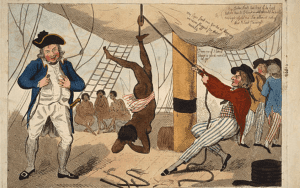

This 1786 diagram shows how slaves were crammed into a ship. MORE HERE: The Final Slave Vessel The 1930s Surviving Interview. A New Report Has Apparently Come to Light
During the 17th and 18th centuries, individuals of African descent were forcibly abducted and traded as enslaved individuals to the American colonies.
Where they were used as indentured servants and field hands. Slave shackles made of iron were used before 1860.
Slavery was at its most dehumanizing at the slave auction. Enslaved individuals were subjected to being sold at public auction to the highest bidder. Sold often, resulting in family members being separated. Slave wives and husbands often had to endure painful separations.
When the American Civil War broke out, the South was responsible for 75% of the world’s cotton production, and the Mississippi River basin had the highest concentration of billionaires per capita. Slaves at Hopkinson’s Plantation in April 1862, planting sweet potatoes.How Slavery-Driven Industry Propelled the South’s Economy.
The decision to escape the horrors of slavery was not made lightly. Those who escaped often abandoned loved ones and ventured into the wilderness, where they risked encountering dangers such as starvation and bad weather. Two slaves who fled in 1861 are depicted here.
About a third of the people living in the antebellum South were enslaved. A former slave from Louisiana is depicted in a punishment collar in 1863. His forehead bears the owner’s initials.
In 1863, Peter, a former slave who had fled to the United States, showed his scarred back during a medical examination to join the Union Army in Baton Rouge, Louisiana.
In an article published in The Selma Times-Journal in 1931, Durken and Diouf revealed Matilda’s identity. Matilda had trekked the 17 miles to Selma after hearing from her grandsons that World War I veterans had finally received their long-awaited bonuses.
She wanted to claim compensation for having been kidnapped as a youngster and taken to the United States. She displayed the scars on her cheek as evidence that she was originally from Africa.
In the same way that slaveowner Timothy Meaher had refused reparations to the survivors of the illegal Clotilda trip in 1865, the judge denied her any compensation. When Cudjo Lewis approached Timothy Meaher about compensation for the Clotilda survivors, Meaher allegedly said,
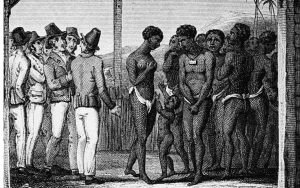

“Do you believe, in your foolishness, that I am inclined to bestow upon you multiple properties??”
Lewis subsequently told Zora Neale Hurston about the exchange. I’ve been kind to my slaves, and I don’t owe them anything for it.
Despite having so much taken from them, Cudjo Lewis and the other Clotlida survivors could save up and buy land near Mobile, Alabama, where they established the settlement of Africatown.
The city has suffered economically over the past few decades, having weathered Hurricane Katrina and high levels of industrial pollution, such as those brought on by the 2010 oil spill from the BP Deepwater Horizon.
Africatown wanted to capitalize on the 2019 discovery of the Clotlida’s wreckage by hosting an exhibit on the ship.
However, the Meaher family, who still owns a large amount of land in Alabama, needs to pay more attention to efforts to revitalize Africatown.
In an interview for the cover story of National Geographic’s February 2020 issue, Timothy Meaher’s great-grandson Robert Meaher cast doubt on the authenticity of the wreckage of the Clotilda, pointed out that his ancestor never served time in prison for his slave-trading crimes (many white men didn’t), and attempted to justify his ancestor’s actions by claiming that Cudjo Lewis converted to Christianity in the United States.
He also clarified that he wanted to communicate with something other than the ship’s survivors.
An Ongoing Legacy
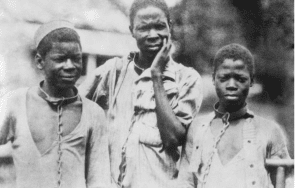

Johnny Crear, McCrear’s grandson, certainly inherited her sass and determination. He attended Xavier University in New Orleans, leaving Selma behind to never return. However, he chose to “give back” to his hometown in the spirit of his alma school, the only black Catholic university in the country, and returned.
He was imprisoned for assault and battery during the Civil Rights Movement. His crime was preventing a white man from choking him with a live snake.
As a 28-year-old administrative assistant at the Catholic Good Samaritan Hospital on March 7, 1965—later dubbed Bloody Sunday for the racial violence that rocked Selma—Johnny worked tirelessly to admit the numerous injured protesters who went to the hospital.
The community leader who has served on a dozen boards and integrated the Catholic community, Crear became a hospital administrator who offered care to the indigent and was named Rotary Club Citizen of the Year. After hearing the details of her life that I had uncovered, he was torn between admiration for her strength and determination and anger at the injustices done to her.
His first reaction to the news was that it shed light on the circumstances surrounding his wife’s kidnapping, sale, transportation to the New World, and eventual enslavement. Like you, I was infuriated by this news. Reading about slavery in a book is one thing, but when it affects your family, it becomes very real.
Paul Calhoun III, age 27, is one of Johnny Crear’s nine grandsons. He was raised in Atlanta. He followed in his grandfather’s footsteps by attending college and graduate school at the University of Pennsylvania’s Wharton School of Business before returning to the South.
How did he feel about hearing about his ancestors?
He says, “Learning about my great-great-grandmother and her resilience in the face of uprooting, marginalization, trauma, and adversity has strengthened my pride in my family.” There is “some personal pressure to persevere personally and publicly” because of this sense of pride.
When asked about the bigger picture, Calhoun stated, “I think Matilda’s narrative sheds a lot of light on the attempts to stifle the voices of ex-slaves and their descendants. I’m hoping it will help put the illicit slave trade into perspective and show what it’s like when individuals are marginalized by the government in another cautionary tale.
As Clotilda sank to the bottom of the Mobile River 160 years ago, the Crears, under many different names, stubbornly persisted. Theirs is a tale of strength and perseverance: of African women caring for their children on the slave ship and in the harsh cotton fields, of independent youngsters uprooting their families in pursuit of better opportunities, and of ambitious descendants.
This narrative is about tragedy and loss, migration (both forced and voluntary), strong family ties, persistence, and uniquely African-American success.
The Final American Slave Ship’s Wreckage Is Found in Alabama
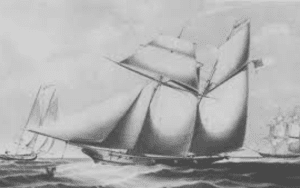

Historians claim they have located the wreckage of the last slave ship to the United States, which was burned and sunk to the bottom of a river.
The Clotilda, the last slave ship in the United States, was found at the bottom of the Mobile River in Alabama after an extensive search. This news comes barely a month after a scholar revealed the final Clotilda survivor lived until 1937 and a year after the publication of Zora Neale Hurston’s long-lost Interview with one of the ship’s survivors.
The people of Africatown, Alabama, who trace their ancestry back to the Africans who were illegally carried on the Clotilda in 1860, attach great significance to this event.
Expresses her admiration for this remarkable finding.
And a visiting scholar at Brown University’s Centre for the Study of Slavery and Justice. As far as we know, this is the only ship that sailed directly from Africa to the Americas. It was on its way to Brazil when it crashed in South Africa, near Cape Town. (The recently discovered So José)
Clotilda’s narrative is the best chronicled of any slave ship in the Americas. Therefore, this finding is doubly important. “If it had only been a ship without the story, then that’s interesting,” adds Diouf. But we have the whole story,” she said. This is the first time the details of what happened to the ship’s passengers and crew have emerged, and the ship itself has been recovered.
In January 2018, more vessel was uncovered that some felt might be the Clotilda, which inspired the research initiative that eventually located the Clotilda. After that, the Alabama Historical Commission provided funding to continue the search for the Clotilda, a slave merchant’s ship that had been torched and sunk to the river’s bottom to conceal evidence of her illicit expedition.
The excavators combed a portion of the Mobile River that had never been dredged. Several sunken ships were in the area, but historians eventually located one they believed was the Clotilda.
The remains of a vessel, widely believed to be the CLOTILDA, the final recorded slave ship to transport African prisoners to the United States.
It was discovered in Mobile County, Alabama, on January 2, 2018.
Just one year before the Civil War, the Clotilda brought over a hundred African children, teenagers, and young adults to Alabama. Several young people settled in Alabama to form an “African Town” settlement after 1865, when slavery was finally abolished in the United States.
Some of these people remembered their abduction and enslavement well into the 20th century, and the town’s efforts to record their histories were crucial to keeping those memories alive.
We have images and conversations with persons who came across aboard the Clotilda, unlike other slave ship survivors who have been virtually unreported. Redoshi, afterwards known as Sally Smith, was the last known survivor.
We have film footage of her. Cudjo Lewis, an esteemed member of the African Town community, Cudjo Lewis, a founding member of African Town, recalled the disorienting pain of being seized and enslaved at 19 during an interview with Zora Neale Hurston in the 1920s and 1930s.
“We do know why we are bringing ‘way from our country to work lak dis,” added Lewis, whose name is “Kossula.” Everybody gave us an odd look. We want to communicate with people of colour who need help understanding what we say.
What will happen to Clotilda’s remains is unclear. Still, the people of Africatown hope to call attention to them somehow.
Low-income residents of Africatown are resilient in the face of natural disasters and industrial contamination, for instance, the adverse effects of the BP Deepwater Horizon oil disaster such as that caused by the BP Deepwater Horizon oil spill.
One possibility is a water memorial like the one honouring the USS Arizona in Pearl Harbour.
“As a symbol, I think it’s crucial,” Diouf says of the find. It puts Africatown on the map, and that’s saying a lot for a neighbourhood that’s been struggling as much as Africatown has in recent years. And we might expect some positive results from it.
The Alabama Community Continues to be Inhabited by Direct Descendants of the Last Slave Ship.


Most African Americans who are descendants of enslaved individuals face significant challenges in determining the specific origins of their ancestors. Furthermore, as Malcolm X underscored, it is impossible to ascertain their authentic ancestral surname.
The transatlantic slave trade resulted in the separation of families, and historical documentation from slave vessels and plantations frequently exhibited instances where enslaved individuals were identified by several or fragmented identities.
Establishing a genealogical link between the emancipated African Americans initially recorded in the 1870 census and their previously enslaved forebears poses a considerable challenge, commonly referred to as the “1870 Brick Wall.”
In light of the deliberate elimination of historical records, the narrative surrounding the Clotilda, which represents the final vessel to transport enslaved individuals to the United States, holds a particularly distinctive position Reflecting on the transatlantic slave trade.
In the year 1860, before the onset of the Civil War, the Clotilda vessel transported approximately 110 individuals of African descent, encompassing children, teenagers, and young adults, to the state of Alabama. Following their emancipation on June 19, 1865, sometimes called Juneteenth, African descent individuals could not return to Africa.
However, they left behind valuable records and provided interviews detailing their identities and origins, which have persisted to the present day. The renowned singer Questlove has ancestral ties to survivors of a significant maritime incident.
This revelation was unveiled during his appearance on the “Finding Your Roots” genealogy program, where eminent historian Henry Louis Gates, Jr. expressed that Questlove had fortuitously stumbled onto a highly valuable piece of information.
According to historian Sylviane A. Diouf, author of The Historical Account under discussion pertains to the Slave Ship Clotilda and the narrative surrounding the final group of Africans transported to America in captivity.
As mentioned above, the narrative is the most extensively recorded account throughout the entirety of the slave trade, encompassing not just the United States but also the broader region of the Americas.
In January 2018, the discovery of potential remnants of the Clotilda garnered significant attention from researchers and the public. Despite subsequent confirmation that the discovered vessel was not the Clotilda, this occurrence catalyzed increased enthusiasm for locating the ship above.
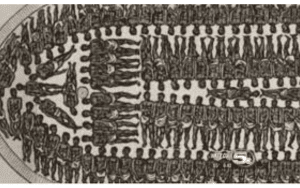

The Interview conducted by Zora Neale Hurston with Cudjo Lewis, the final survivor of the ship, was released by Harper Collins in May 2018. Cudjo Lewis passed away in 1935. These recent advancements have garnered increased focus on the survivors of the Clotilda, as well as on African Town, the self-established community located in Alabama.
Despite the legality of slavery in 1860, it is important to note that the international slave trade had been prohibited since 1808. However, it is worth noting that certain individuals from the southern region of the United States, specifically white men, engaged in illegal activities by continuing to import enslaved Africans despite prohibiting such practices.
Interestingly, these individuals violated the law and took satisfaction in their ability to evade legal restrictions. Timothy Meaher, a mobile entrepreneur, orchestrated the Clotilda expedition following a wager he made, expressing his intention to clandestinely transport a vessel carrying individuals of African descent into Mobile Bay to evade the scrutiny of authorities.
The vessel known as the Clotilda embarked on a voyage to a port in West Africa, presently situated inside the borders of the Benin. In that location, the captain engaged in the acquisition of individuals originating from the Benin region, such as Cudjo Lewis.
At 19, he was apprehended by the Dahomean kingdom and subsequently transported to the coast to be sold. His original name was Kossula. Meaher sold some African individuals in Alabama while allocating the majority among himself, his two siblings, and the ship’s captain. It is worth noting that none of these individuals faced legal consequences for their actions.
Lewis was among the approximately 30 survivors of the Clotilda who were coerced into working for James Meaher for the next five years. According to Diouf, upon receiving news of freedom in 1865, the primary objective of this group was to return to their place of origin.
Meaher’s failure to furnish them with a means of repatriation to Africa prompted them to recognize the insurmountable challenge of self-funding their return journey.
Recognizing the necessity of securing accommodation in the United States, the individuals approached Timothy Meaher with a request for restitution.
In the Interview with Zora Neale Hurston, Lewis recalled proposing to Meaher that the Clotilda Africans, who had suffered the loss of their land and property, be compensated by being granted a portion of his own land as restitution for the lives and free labour he had taken from them.
Lewis reported that Meaher replied,
“Do you think I will give you property after property like a fool?
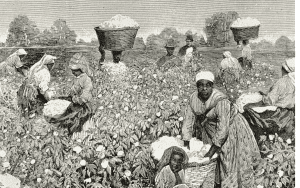

I took good care of my slaves, so I don’t owe them anything.” After being rejected by Meaher, the group decided to work hard and save money to buy land from him, which they eventually did. Lewis sarcastically mentioned to Hurston that Meaher didn’t even reduce the price by five cents for them.
They established an African Town community using this land and other acquired properties. Presently, the location known as “Africatown” in Mobile, Alabama, is a significant historical place inhabited by numerous individuals who are direct descendants of the Clotilda.
An individual observing a gravestone dedicated to Cudjo Lewis within the confines of the Africa Town Welcome Centre cemetery.
Robert Battles, Sr., the former executive director of the Historic Africatown Welcome Center, recalled the determination of the people who built a free society in Alabama during Jim Crow, segregation, and reconstruction. They boldly stated that they would build Africa there without being sent home. The community was run and controlled by Africans.
According to Diouf, the essence of this story is about the unity of the people on the ship. However, it also represents the story of all Africans who arrived through the slave trade. The bond between the people on slave ships was strong, and they maintained a link to their families back home that was never broken in their minds.
After the Clotilda survivors settled in Alabama, they continued to hope for a reunion with their families. They believed that their families in Africa were looking for them. During interviews, they requested that their African names be used so their families would know they were still alive if the story ever reached Africa.
Meaher, to hide the evidence of the unlawful voyage to Africa, burnt the ship in the Mobile-Tensaw River Delta. The wreck could be seen at low tide for decades but has since vanished.
Africatown’s lawsuit against an industrial plant for producing cancer-causing pollutants has gained national interest due to recent conjecture regarding the ship’s whereabouts. This spring, the town received funding to construct a museum, and there is still widespread academic and non-profit interest in finding the Clotilda.
As far as we know, the Clotilda is the only slave ship from the American slave trade that has ever been located. However, the people living in Africatown would benefit much from this. For Battles, “if you don’t know your history, you’re just like a tree without no roots.” This is a quote by Marcus Garvey.
Where Did the African Diaspora Come From?
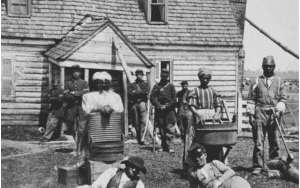

Africans were captured, transported, and sold to Europeans for servitude in the New World as part of the transatlantic slave trade. The African diaspora, or the migration of African people away from their homelands on the African continent, was largely the result of this initiative from the 16th to the 19th centuries.
It is estimated that approximately 66 million people of African descent now live in South America, 1.9 million in Central America, and more than 14.5 million across the islands of the Caribbean. The trans-Atlantic slave trade, which occurred from the 16th to the 19th century, had a significant and lasting impact on the world.
It involved the forced transportation of millions of people from Africa to the Americas, Europe, and other parts of the world to be sold as slaves. The effects of this trade can still be felt today, particularly in terms of the lasting social, economic, and political repercussions experienced by the descendants of enslaved people.
Despite living through centuries of change and turmoil, the people of the African diaspora have maintained their rich cultural traditions, unique communities, and sovereign nations.
Triangle Trade
The triangle commerce system included the transatlantic slave trade as one of its three facets. The triangle was first formed when European ships brought firearms and manufactured goods to Africa in exchange for enslaved men, women, and children. The same ships then sailed over the Atlantic to the Americas, carrying their human cargo.
The Middle Passage was the name given to this terrible ordeal. After the African slaves were unloaded, the ships sailed back to Europe laden with cotton, sugar, tobacco, and other cash crops grown by slave labour.
Slave Vessel
At the cost of millions of deaths, the triangle trade brought great wealth to the European and American governments who participated in it. The Middle Passage claimed the lives of around 1.8 million Africans.
Portugal, Britain, France, and more European countries, the Netherlands, Spain, the United States, and Denmark, ranked first through seventh among the countries that exported the most African slaves to the so-called “New World.” Together, they sent an estimated 12.5 million people to work in the colonies.
Germany and Sweden, among others throughout Europe, also participated in the trade, but only peripherally or briefly. Despite its absence from most accounts of the slave trade, Canada held slaves as a French possession and later as part of the British kingdom.
The newly established Institute for the Study of Canadian Slavery at NSCAD University in Halifax. In his words, “It’s a national amnesia.”
African Societies Outside of the Americas
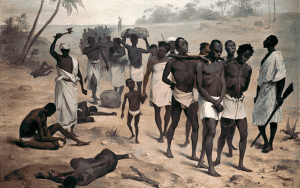

The Arab Slave Trade, which included eastward and northern operations, began long before the transatlantic slave trade. They were crucial in establishing the African diaspora in the Ancient World.
As noted by Sylviane A. Diouf, a highly regarded historian of the African diaspora and co-curator, it is a well-documented fact that individuals hailing from Ethiopia, Eritrea, Somalia, and the Swahili Coast were cruelly and forcibly taken as slaves to the Indian Peninsula.
This distressing chapter of human history has left an indelible mark on African and Indian societies. It serves as a sobering reminder of the tragic consequences of unchecked greed and exploitation.
Since the 1300s, several portraits have been painted of Africans who rose to the ranks of commander, admiral, architect, high-ranking official, prime minister, or monarch. They also established the states of Janjira and Sachin, which they used to oppress the Hindu and Jewish majorities.
Human exploitation was common to both the trans-Atlantic slave trade and the Arab slave trade. Slaves from the African continent were transported to Madagascar by Arabs as early as the 10th century.
In the 18th century, European slave traders established a presence on the island, eventually shipping around 6,000 captives to the Americas. Although a few enslaved people were from Madagascar, their descendants include well-known people such as Maya Rudolph and Keenan Ivory Wayans.
Slaves from Africa were also transported to Europe to feed the bizarre appetites of certain Europeans.
According to Monica L. Miller, author of Slaves, “a trend began among British royals, nobles, ship captains, and merchants of keeping Africans as entertainment, curiosities, and sometimes surrogate sons.
” As the author puts it, These African-American men were nearly always dressed exaggeratedly, donning the most recent trends or liveries. This was referred to as “forced foppishness.”
Resistance’s Crucial Role
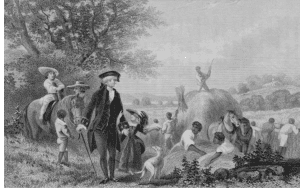

The trans-Atlantic slave trade, which involved the enslavement of millions of Africans and their forced transfer to the Americas, profoundly impacted the formation and composition of slave communities in the New World. However, it also had important implications for how enslaved peoples resisted subjugation.
From the development of unique cultural practices and languages to organized rebellions and acts of sabotage throughout the Caribbean and the United States, the legacy of the trans-Atlantic slave trade is one of both suffering and resilience. writes Marjoleine Kars in. This lasted for nearly four centuries before it was finally abolished by all nations involved.
Consider the slave uprising in Berbice in 1763 and 1764, for instance. The revolt began in February of 1763 and lasted for over a year.
The particular geographical area referred to is a relatively diminutive settlement founded by the Dutch, situated on the coastline of the Caribbean Sea in the southern region of the continent of South America.
Slaves commanded by Coffij or Kofi rose up, drove the Dutch out of the colony, and established themselves as the new power structure.
In 1928, while enjoying a peach on his porch in the warm Alabama sun, Cudjo Lewis (born Oluale Kossola) told a visitor about his life, beginning with his origins in West Africa, continuing through the Middle Passage on the infamous Clotilda ship, and ending with the establishment of the freedman community of Africatown.
Kossola’s interlocutor listened to his stories for two months before finally asking to take his picture. While barefoot, Kossola informed her, “I want to look like I in Africa, ’cause dat where I want to be.”
Zora Neale Hurston, the famed Harlem Renaissance author of Their Eyes Were Watching God, was his listener, comrade, and scribe. She poured his story into Barracoon: The Story of the Last “Black Cargo,” writing it largely in his voice and dialect.
The document is being released next week after being worked on for eight decades. (The Spanish word for a prison where slaves were held before the Middle Passage expedition provides the title.)
During the late 19th and early 20th centuries, numerous anthropologists constructed the concept of scientific racism. This theory posited that certain races were superior to others based on biological and societal factors.
However, in contemporary times, this theory has been widely debunked and considered both inaccurate and harmful.
Through scientific research and cultural awareness, it has become clear that race is a social construct rather than a biological fact and that all human beings are inherently equal.” as explained by Deborah Thomas, a professor at the University of Pennsylvania and one of the keynote speakers at a conference on Hurston’s work in 2016.
Anthropology appealed to her since it allowed her to study the customs of her own group and compare them to those of other societies.
Barracoon: The Story of the Last Slave
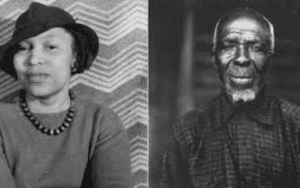

According to media reports, the individuals responsible for the abduction have expressed a willingness to divulge further information about their actions.” she says.
In 1928, a man named Kossola was interviewed by author Zora Neale Hurston for her book Barracoon. At the time of the Interview, Kossola was believed to be around 90 years old and considered the last surviving passenger of a slave ship.
Describes him as the sole individual on earth who held the memories of his African home, the atrocities of slave raids, the confinement of the Barracoon, and the oppressive experience of slavery.
Moreover, what made Kossola’s story even more remarkable was the fact that he had lived for 67 years as a free man in a foreign land. This Interview with Kossola provides an invaluable window into the brutal realities of the transatlantic slave trade and the strength and resilience of those who survived it.
Hurston had met Kossola before she wrote about his life in Barracoon. Neither was she the first nor the only scholar to speak with Kossola. In 1925, her contemporaries, Emma Roche and Arthur Huff Fauset, did the same thing.
Hurston was dispatched to collect Kossola’s account in 1927 by Boas and Carter G. Woodson for an article in the Journal of Negro History. Scholars have since uncovered Hurston plagiarised heavily from Roche’s interviews, and they have theorized about her violation, speculating that her lack of material was the driving force.
Barracoon is unique among famous slave narratives because it does not feature any attempts at emancipation or self-purchase or mention the abolitionist movement. Plant states,
“His story does not describe an ascent into the American Dream.”
“It’s like a slave story told backwards, with the protagonist travelling through time to a time of baboons, betrayal, and barbarism. And then back to a time of peace, freedom, and belonging.”
To narrate Kossola’s story, Hurston did everything she could to become part of his world, including helping him clean the church where he worked as a sexton, taking him to the bay to get crabs, and giving him summer fruit. She began her relationship with her subject on a fundamental level by learning his name.
Kossola becomes emotional when Hurston greets him by his given name: “Oh Lord, I know it you call my name.” From across the river, you’re the only one who has ever called me by name. You keep calling me Kossula, like you do in Africa. “a vital and authenticating feature of the narrative,” as Plant puts it, is that.
Following Kossola’s lead, Hurston recorded his experiences growing up in Dahomey (now Benin), being captured at 19 and held in a dungeon, his dehumanizing arrival in America, and his five years as a slave in Alabama. When Kossola and the other survivors of the Clotilda were forbidden to return to their homeland, they founded the town of Africatown.
Hurston details his efforts to keep his family together after losing members to tragedy or violence. He tears as he tells her, “Cudjo feels so lonely; he can’t help but cry sometimes.”
Hurston’s point of view is interjected intermittently throughout the story. For example, once her protagonist recalls a certain memory, the reader is given a greater context of the experience by learning that the protagonist is suddenly transferred.
Eventually, she realized she was alone on the porch since Kossula had left. He was squabbling over the Dahomey blaze. His features twitched as if in excruciating anguish. A terrifying mask. He failed to notice my presence. Amid the smoke, he stared into the eyes of the recently deceased.
When conducting interviews, Hurston “eschew[ed] a questionnaire-based approach,” as Durkin puts it. When her interviewee didn’t feel like talking, Hurston didn’t force the issue. She was curious and kept returning to his place to find out more.
Kossola tells Hurston that he opened up to her to leave a lasting impression: “Thankee Jesus! Whoever said that about Cudjo was wrong. To paraphrase Kossula: “I want to tell somebody who I am so that Perhaps one day they will go to the foreign soil and scream forth my name, and others.
There were some hiccups in the process: Durkin notes that Charlotte Osgood Mason, a white supporter of Harlem Renaissance artists, funded Hurston’s Barracoon reportage. According to Durkin, the organization’s sponsorship associated it with a long tradition of voyeurism and the theft of cultural practices.”
visit website for more interesting biographies
